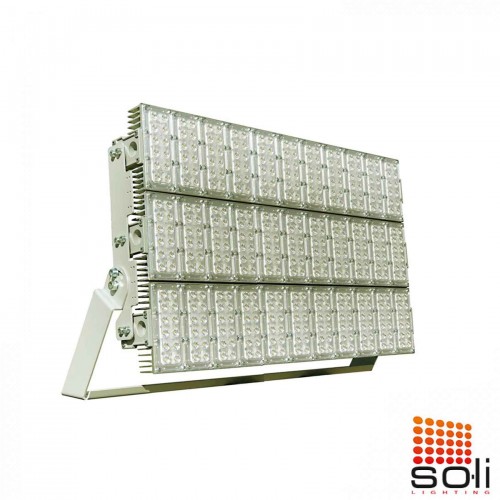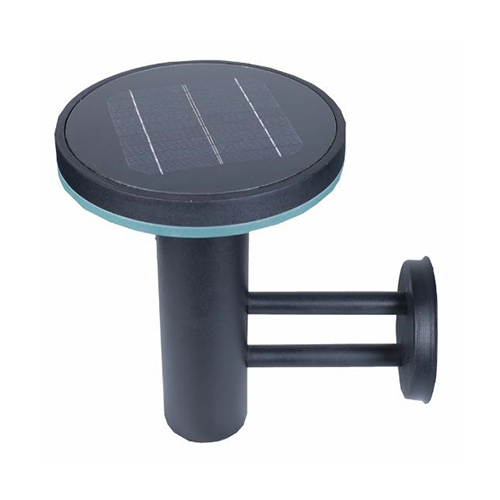Safety and Operational Tips for Light Towers
Light towers are often the least mind-blowing tool on a job site until it's time to turn them on or off. However, like a flashlight on a dark street, light towers are one of the most important tools on a construction site when the sun goes down.
Light towers are essentially diesel powered generators combined with a lighting element. In most cases, the light tower has a means of auxiliary power in addition to the power it uses to run the lights. This transforms most light towers into multifunctional pieces of equipment, allowing operators to use them as small generators.
Before any maintenance is performed, it is imperative that the machine be completely shut down in time to allow it to cool completely. Maintenance personnel must also understand the relationship between hours and mileage. A typical 400 to 500 hours on a light tower would be equivalent to 20,000 to 36,000 kilometers on a vehicle.
Understanding this helps to better understand the wear and tear that the light tower and engine see.
When talking about maintenance, there are a few areas to consider: the engine and the light tower itself. In most cases, users will be dealing with a liquid-cooled engine equipped with a radiator and oil pan. Appropriate maintenance and replacement programs should be applied for all filters, including the fuel filter and air filter, especially in polluted environments. In addition, ensuring that the correct, clean fuel is used along with the proper engine oil can add a lot of time to the machine in terms of uptime and lifespan in a well-maintained condition.
When the machine is moved and put in place, its correct setup is very important. A lot needs to be done between getting the light tower on site and getting it up and running. Users need to level the light tower and install the outriggers correctly. Next, make sure the lights are positioned and adjusted to the desired position before lifting the mast. When the tower is installed and the mast is raised, make sure all switches are turned off before starting the engine. Operators should always refer to the manufacturer's instructions for start-up; After the engine is turned on and running, it is best to run the engine for a few minutes before starting your work.
Bulbs are one of the most used components of light towers. The overall lifespan of a light tower bulb is 1,000 hours, but the more the light tower is pulled, the higher the chance of the lighting element breaking. This is largely due to how tightly the machine is attached to the vehicle to which it is towed during towing. The best way to pull the bulbs without breaking them is to point the lamp holder downwards with the lenses in and make sure the post is fully down and secured to reduce bounce during transport. In addition, it is important to have safety pins on all outriggers to prevent slipping, safety chains attached, trailer lights fully operational, and tires properly inflated before towing.
Other than shrinkage, protecting the bulbs from contaminating foreign matter as much as possible will prolong their health. Store the new bulb to be replaced in a clean place, unpack it only when you are going to use it immediately, avoid touching it with bare hands (oil from users' hands can contaminate the lighting element and cause it to burn at a higher temperature), and after all properly fix the bulb on the light tower. in terms of importance.
Different light towers have different maintenance techniques. The main differences in light towers are related to the type of lighting element used. High pressure sodium, mercury vapor and metal halide lamps tend to burn at higher temperatures and proper handling techniques (clean storage and safe handling) must be followed. LED lighting elements are easier to use as they do not burn hot; but LED bulbs are not replaceable, so the entire element needs to be replaced.
The other negative element that operators should be aware of is the wind speed outside. Not only is it potentially damaging to the light tower, it's also a safety issue. The light tower units are equipped with four-point stabilizer/outrigger systems and are built to withstand winds typically up to 65 mph when the outriggers are properly deployed. Light towers should never be operated in higher winds than specified by the manufacturer.
Our ..
₺52,250
Ex Tax:₺52,250
The excite..
₺69,800
Ex Tax:₺69,800
&nbs..
₺42,250
Ex Tax:₺42,250
The excite..
₺24,350
Ex Tax:₺24,350
Our Soli L..
₺18,400
Ex Tax:₺18,400
&nbs..
₺6,450
Ex Tax:₺6,450
Our ..
₺8,700
Ex Tax:₺8,700
The excite..
₺26,600
Ex Tax:₺26,600
LED ..
₺5,250
Ex Tax:₺5,250
Road..
₺6,600
Ex Tax:₺6,600
About LED Flood Lights
- LED Flood Light Buying Guide
- Brain Of Led Flood Lights : LED Flood Light Drivers
- Can A Floodlight Be Used Instead Of Street Lights?
- Are LED Lights Suitable for Hazardous Locations?
- About High Bay and Low Bay Lighting
- 10 Benefits of LED Floodlights for Outdoor Lighting
- Main Factors of Outdoor LED Lighting Design
- Solar Floodlight
- Smart and Human Centered Lighting
- 4 Lighting Design For Post-Covid
- Health Risks That Are Actually Myth About LED Lights
- Things to Avoid When Upgrading Your Lighting Style to LED
- The Future of LED Lighting
- High Power LED Floodlight
- About Amount of Light And Light Quality
- LED Stadium Lighting Information
- Performance of LED Lights in Cold Weather
Usage Areas
- Sports Lighting
- How To Choose Stadium Lighting Company
- Aircraft Hangar Tips
- LED Warehouse Lighting
- Automotive Showroom Lighting
- Safety and Operational Tips for Light Towers
- Advantages and Applications of LED Street Lights
- How LED Street Lights Can Save Citizens Millions of Liras
- Outdoor LED Lighting
- Is LED Industry Evolving?
- LED For Car Parks
- Solar Street Lights
- Use of LEDs in Tunnel Lighting
- LED Lights for Your Garden Inside Your Home
- Solar Street Lights Calculation and Sizing


















